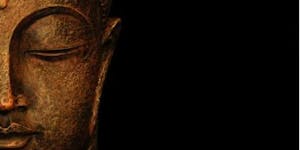I am not going to discourage you from exploring the hidden territories and landscape of the dream world. Maybe you will find something that you are looking for, or come away with some insight that you can carry with you on your journey. At the very least, lucid dreaming is interesting and fun.
Dream yoga is a practice of waking up, gaining some insight into who we are so that we can recognize our true nature and show up in the world more fully. With this understanding, using lucid dreams to go on adventures or have a good time seems a little mundane. We start to realize that lucid dreaming also provides great potential for mining the depths of our own wisdom and manifesting our innate Buddha nature in a very experiential way. There are many ways to do this, but I invite you to consider a quote by the great master Padampa Sangye:
Go to places that scare you. In haunted places, seek the Buddha within.
Use the practice of dream yoga to wake up. Go to the places that scare you, that bring up fear. Use that fear to 'wake up' in the dream. A Buddha is 'one who is awake', and that is what lucid dreaming is all about, knowing that you are awake in the dream and that this is a dream.
Think about your normal experience of a dream. You are normally immersed in the plot as it unfolds and have no power or control over what happens. You just go along for the ride as a bystander and are subject to experiencing the highs and lows of this subjectively real dream world as they come. Does this sound a little bit like waking life?
Normally, it is only after we awaken from the dream that we discover freedom and a sense of relief, "Ah, thank goodness. That was just a dream." In dream yoga, the key difference is that you wake up in the dream, knowing it is a dream. When you wake up in the dream you discover a natural freedom because you know that what you are experiencing isn't real. It can't hurt you, it can change.
"This is a dream. This isn't real. I am free." That's a nice sort of mantra for waking up in the dream.
With this insight, going to places that scare you is a powerful way to look at what you are holding onto. What is that monster? It looks terrifying, but what is it really? Who is it that is chasing you and what are you running from?
Waking up in those dreams allows us to look at our own confusion and grasping. It allows us to invite the hidden recesses of our mind into the light. I see you, I hear you, I understand. Those are just as powerful in the dream world as they are in the real world.
Waking up in this way, we might ask ourselves, "What would Buddha do?" As a Buddha, what would you do?
How does our wisdom and generosity show up in the world? How do we exercise compassion and patience in difficult situations? How do we maintain an open and responsive presence when we are in the midst of confusion and overwhelm?
These are questions that we struggle with during the day, and questions that we can continue to work with during the night.
Go confidently into the darkness. Find the light within.

